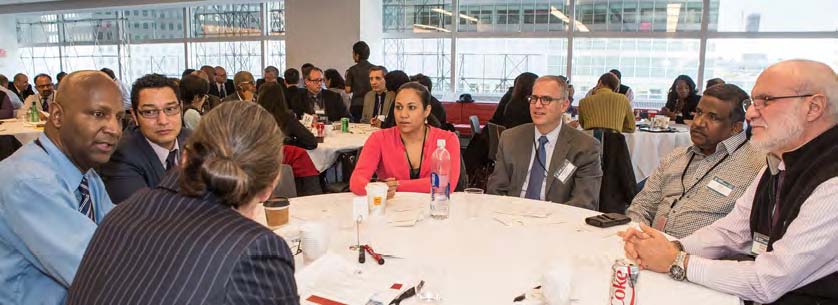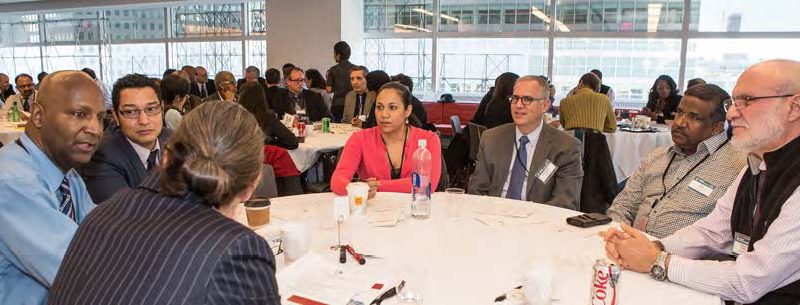Look for Shorter and More Productive Meetings in 2016

Good news! Managers at the final Senior Leadership Meeting of 2015 spent the afternoon on December 8 learning and practicing how to convene shorter and more productive meetings.
The workshop session began with a show of hands indicating that the senior managers strongly agreed that most meetings were too long. And the training ended with Chair and CEO Shola Olatoye challenging managers to implement the new approach.
Planning the meeting is as important as the meeting itself. The meeting agenda must clearly identify the purpose( s), including action-oriented goals such as making a decision or solving a problem, or information-oriented discussion such as learning from a report or tracking a project’s progress. Outcome(s) should be clearly in mind to set the right direction.
Sample outcomes included: “An action plan of who does what by when for the next phase of NextGen NYCHA,” and “A shared understanding of what worked/needs improvement in crisis management.” The next question is which stakeholders to invite. Stakeholders may include people who are involved in the decision-making process or impacted by the decision; those who can either implement or obstruct the desired outcome; and those who have relevant information or expertise. Keen collaborative skills may be required to effectively engage stakeholders who will be concerned with “what’s in it for me” and who may have competing interests.
Action-oriented meetings may include a delegation of key tasks. Sometimes a meeting can begin with introducing each participant and his or her role in the process. The “default” length for a meeting should be a half hour, or up to one hour depending upon the purpose.
Many meetings will end with a series of “next steps” in place, based in part on the delegation of tasks. The act of delegating tasks and sometimes coaching staff to perform them is so crucial that a second afternoon workshop was devoted to these elements.
With these concepts in mind, the workshop participants formed small groups around tables to decide upon a meeting topic and draft their own meeting agenda. After a lively period of collaboration, they were asked to comment on their experience.
“Starting with an agreed purpose gave us a common goal,” one manager said.
“Considering the self-interest of various stakeholders was challenging,” said another.
“Saying to each stakeholder why they were there helped form role clarity,” another manager observed.
“A number of managers have mentioned that their use of a more focused agenda has saved time, adding to the productivity of their meetings,“ Chair and CEO Shola Olatoya later said. “Working smarter will enable us to meet our NextGen goals on time, and produce great results.”
Sample Meeting Agenda From Community Resource Exchange Presentation
| What (Content) | So What (Outcome) | How (Process) | Who (Roles) | When (Time) |
| Overview/Opening | A shared understanding of outcomes | Welcome
Check-in: what I need tobe present Review of desiredoutcomes Check for understanding/agreement |
One person (usually meeting chair) | 9:00 – 9:05am |
| Report progress on NGN | A shared understanding of current NGN status to support executive team planning | Rotate presentations by department
Seek feedback |
One representative per department | 9:05 – 9:45 am |
| Develop communications plan on evictions | A communications blueprint outlining core messages | Present key communication milestones
Brainstorm keymessages to deliver Vote on best ideas |
9:45 –10:45 am | |
| Next steps | An action plan of who does what by when | Facilitator to review what/who/by when | Facilitator/Chair | 10:45 – 10:55 am |
| Close | Understanding of what worked/needs improvement in meeting process | Any acknowledgements
Reflection on plus/delta |
Anyone in the room | 10:55 – 11:00 am |







